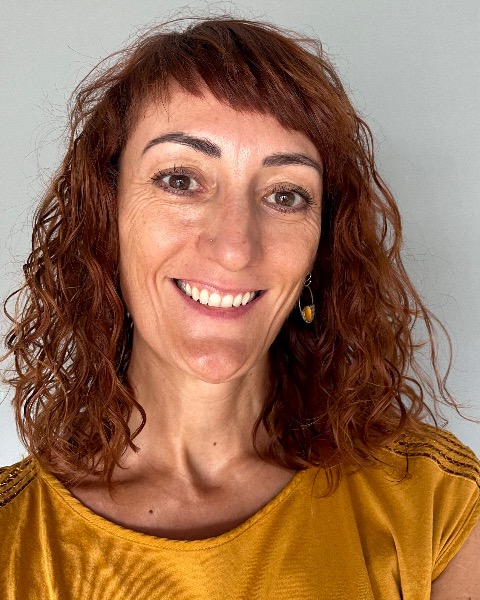Screening Applications & Diagnostics
Poster Session B
(1007-B) A tri-dimensional high throughput screening platform for Drug Discovery
Wednesday, May 29, 2024
10:30 - 11:15 CEST
Location: Exhibit Hall

Rosario Fernández Godino (she/her/hers)
Head of Screening and Target Validation
Fundacion Medina
Granada, Andalucia, Spain
Poster Presenter(s)
Abstract: High-Content Screening (HCS) technology has revolutionized the early drug discovery field in the last years. HCS combines cell biology and molecular tools with automated high resolution microscopy and robotic handling. This new type of cellular phenotypic screening enables the identification of lead compounds across multiple drug classes through the automatized acquisition of confocal bright field or fluorescent images. HCS facilitates the characterization of cellular phenotypes altered by test compounds, which allows a more profound understanding of drug effects and a better integration of disease-relevant screens.
MEDINA is a private non-profit Research Organization with a major focus on the discovery of novel natural products with relevant biochemical properties that can be applied to the development of new drugs, with a special focus on cancer and neurodegenerative diseases. This work is a proof of concept for the use of the HCS technology in the discovery of compounds with antioxidant, antiapoptotic, and other specific cytotoxic effects. First, we have utilized the Operetta CLS high content analysis system (Revvity) to evaluate caspase-mediated apoptosis, alterations in cell cycle, and oxidative stress in HTS 2D cultures of pancreatic (PC-3), breast (BT474), melanoma (A2058), and hepatic (HepG2) cancer cells treated with commercial compounds that precisely trigger each mechanism. The results demonstrate the capability of the HCS platform for successful phenotypic drug discovery in cancer using 384-well plates.
3D cell culture models mimic the complex architecture of tumors and better represent their physiological conditions, such as complex cell-cell interactions, gradients of oxygen, nutrients, and metabolites. Therefore, we have combined the use of HCS with the NanoShuttle (Greiner Bio-One) technology to develop an efficient HTS-3D cell culture platform for efficient drug discovery. We have implemented the HCS 3D-based methodology to assess the antitumoral activity of canonical chemotherapeutic agents via HTS in 384-well format. The cytotoxic activity of first-line chemotherapeutic drugs like tamoxifen, doxorubicin, vincristine, docetaxel, staurosporine, 5-fluorouracil, paclitaxel, and cisplatin has been tested on cell lines of triple negative breast cancer, which is the most aggressive type of breast cancer and lacks targeted therapy. Additionally, we have tested MDN90, which is a natural product from fungal origin discovered and isolated at MEDINA that shows antitumoral activity. For 3D cultures, brightfield images were acquired with the Operetta CLS High Content Analysis System (Revvity) and analyzed with the Harmony 5.2 software (Revvity). The Harmony data was further integrated by our m3DinAI-HCS DrugQuest algorithm into a KNIME workflow that uses selected image features to train a decision tree. Drug cytotoxicity scores were determined according to the 24 features that yielded most information in the decision-making process, including spheroid size, density, compaction, texture, cell roundness, number of particles, etc.
The results reveal differences in cytotoxicity in 2D vs 3D cell cultures and validate the use of the HCS 3D platform to evaluate antitumoral compounds, including those from natural origin, in HTS assays. This innovative technology allows for the rapid identification of active compounds which translation to the clinic will enable the advancement of targeted therapies. This is critical for cancers with poor prognosis, like pancreatic or triple negative breast cancer.
MEDINA is a private non-profit Research Organization with a major focus on the discovery of novel natural products with relevant biochemical properties that can be applied to the development of new drugs, with a special focus on cancer and neurodegenerative diseases. This work is a proof of concept for the use of the HCS technology in the discovery of compounds with antioxidant, antiapoptotic, and other specific cytotoxic effects. First, we have utilized the Operetta CLS high content analysis system (Revvity) to evaluate caspase-mediated apoptosis, alterations in cell cycle, and oxidative stress in HTS 2D cultures of pancreatic (PC-3), breast (BT474), melanoma (A2058), and hepatic (HepG2) cancer cells treated with commercial compounds that precisely trigger each mechanism. The results demonstrate the capability of the HCS platform for successful phenotypic drug discovery in cancer using 384-well plates.
3D cell culture models mimic the complex architecture of tumors and better represent their physiological conditions, such as complex cell-cell interactions, gradients of oxygen, nutrients, and metabolites. Therefore, we have combined the use of HCS with the NanoShuttle (Greiner Bio-One) technology to develop an efficient HTS-3D cell culture platform for efficient drug discovery. We have implemented the HCS 3D-based methodology to assess the antitumoral activity of canonical chemotherapeutic agents via HTS in 384-well format. The cytotoxic activity of first-line chemotherapeutic drugs like tamoxifen, doxorubicin, vincristine, docetaxel, staurosporine, 5-fluorouracil, paclitaxel, and cisplatin has been tested on cell lines of triple negative breast cancer, which is the most aggressive type of breast cancer and lacks targeted therapy. Additionally, we have tested MDN90, which is a natural product from fungal origin discovered and isolated at MEDINA that shows antitumoral activity. For 3D cultures, brightfield images were acquired with the Operetta CLS High Content Analysis System (Revvity) and analyzed with the Harmony 5.2 software (Revvity). The Harmony data was further integrated by our m3DinAI-HCS DrugQuest algorithm into a KNIME workflow that uses selected image features to train a decision tree. Drug cytotoxicity scores were determined according to the 24 features that yielded most information in the decision-making process, including spheroid size, density, compaction, texture, cell roundness, number of particles, etc.
The results reveal differences in cytotoxicity in 2D vs 3D cell cultures and validate the use of the HCS 3D platform to evaluate antitumoral compounds, including those from natural origin, in HTS assays. This innovative technology allows for the rapid identification of active compounds which translation to the clinic will enable the advancement of targeted therapies. This is critical for cancers with poor prognosis, like pancreatic or triple negative breast cancer.
